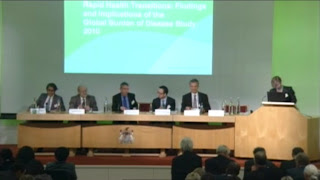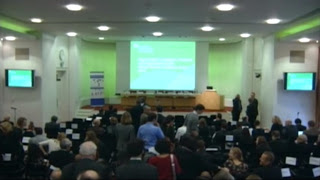Evaluateur
expérimenté, debutant ayant terminé sa première EIS ou étudiant en santé
publique conduisant des recherches en matière d’EIS: la Conférence IAIA 2013
vous sollicite pour des communications en matière d’EIS, quelque soit votre
statut et sur toute thématique.
Les thèmes centraux de cette année, sans que
vous vous sentiez limités par ceux-là, sont: “Réfléter l’éventail de la
pratique de l’EIS” et “Vieilles questions, nouvelles applications”.
Si vous souhaitez
discuter vos idées ou vos experiences avec des collègues-praticiens en matière
d’EIS, cette conference est pour vous.
La session de
presentations n°1 “Réfléter l’éventail de la pratique de l’EIS” va explorer la
diversité des pratiques de l’EIS et la manière suivant laquelle l’EIS est
utilisée à travers le monde.
La session de
presentations n°2 “Vieilles questions, nouvelles applications”, va examiner les
nouvelles approches pour traiter des problématiques bien connues telles que
l’équite, l’efficacité, le changement climatique, les évaluations intégrées et
les EIS sur les politiques et les strategies.
Vous n’êtes bien
entendu pas obligés de proposer une présentation spécifique pour les sessions
consacrées à l’EIS. Vous pouvez tout aussi bien proposer des présentations
orientées sur le theme de la santé dans les sessions réservées à l’étude
d’impact sur l’environnement ou l’étude d’impact social.
Consultez le site
site de IAIA13 à l’adresse: http://bit.ly/ViOA4K
Postez en ligne
votre résumé de présentation ou de poster à l’adresse: http://bit.ly/YKDdZU
Le programme
provisoire de IAIA2013 peut être consulté à l’adresse: http://bit.ly/YuVYSe. Vous y trouverez davantage d’informations sur
les évenements et activités relatifs à la santé qui se tiendront dans le cadre
de la conference. Consultez s’il vous plait les pages 13 et 31 (ainsi que la page 26 pour
les details sur les formations avancées en pré-conférence).
Si vous avez besoin
d’aide pour proposer une intervention ou si vous souhaitez discuter votre
proposition, n’hésitez pas à contacter Francesca VILIANI francescav@internationalsos.com ou Ben Harris-Roxas b.harrisroxas@gmail.com








